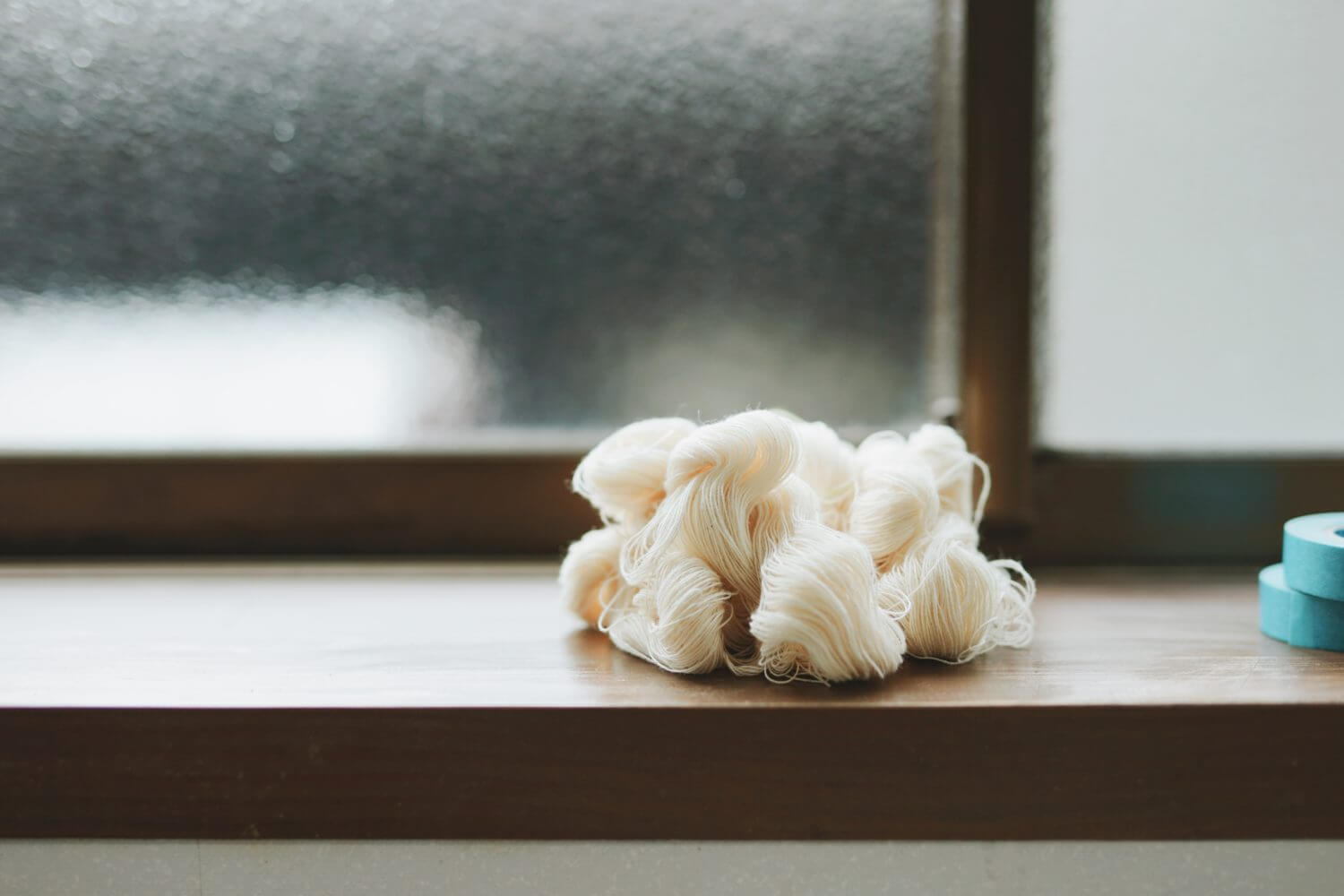ただようふたり vol.03 On a Journey for Inspiration
r
⽩い砂浜が眩しい。
秋⾵に冬の気配が混ざって、厚⼿の上着を着てくればよかったと思う。
前⽇の⾬で砂は湿り気を帯びて、靴でも歩きやすい。
「海の⽅へいってみましょうか」。
すっかり歩き慣れた道を、ナオキさんとケイコさんが案内してくれる。
歩くことが何より好きというふたりは、毎⽇よく歩いた。
歩く速度は暮らしの速度にも連動しているようで、細やかな発⾒を嬉しそうに聞かせてくれた。
この浜で拾う⾙殻が美しいこと。
パレットのように⾊が豊かであること。
何だろうと思っていたモスグリーンの殻は雲丹だったこと。
The white sandy beaches are dazzling.
A sense of winter is present in the autumn wind, so I think it’s better to wear a thick coat.
The sand is slightly moist from the previous day’s rain, making it easy to walk on with shoes.
“Do you want to go to the sea?” I was asked. Naoki and Keiko lead me along a path that they’ve got used to walking. The two of them walk a lot every day, as if there is nothing else they like more. Their pace of walking is as if synched to their pace of life, and they happily tell me about some small discoveries they’ve made.
The seashells you find drifted on the beach are beautiful.
They have rich colors, like from a color palette.
A mysterious moss green shell ended up being a sea urchin.

⾙殻は機屋さんから集まった素材と⼀緒に、⼩さな部屋に並べられていた。
⾃然物も造形物も等しく素材として解体されていく。
⼩さな部屋は、いろんなものがただよう⽔槽のようだった。
廊下にはセメントの⼿洗い場が設置されている。
ナオキさんが機屋さんからもらった素材の実験をしていて、そのために作られたかのように違和感がなかった。
かつて機屋だった家屋は増改築が繰り返され、ときどき機能と⽬的の隙間のような場所がある。
家と⼯場が隣接するから、どちらにも属せないような空間も⾒かける。
こういう不安定な場所というものは、作家の創作拠点にぴったりかもしれない。
⼟間から⽴ち上がる湿度に、埃の匂いが混ざっていた。
Together with the material from the weavers, the seashells were lined up in the small room and taken apart just like with the material. Like an aquarium, their small temporary studio became full of various things that have drifted there.
In the corridor of the artist-in-residence, there’s a cement basin to wash your hands. This is where Naoki experiments with material from the weavers, and the basin doesn’t look out of place at all, as if it was made for that purpose. The house, which was once a weaving factory, had been renovated many times, and here and there are places that seem at odds with their function and purpose. As the house and factory are side by side, there are spaces that seem to belong to neither. But this unstable environment is perhaps well suited for artists to work in. The smell of dust is mixed with the humidity that rises from the dirt floor.

機屋は、産業だ。
⼯場と設備があり、従業員がいて、製品を⽣み出している。
何世代にもわたって、無名の職⼈たちが産業としての織物を⽀えてきた。
家業であるがゆえに、みな⼦どもの頃から⽷に囲まれて育つ。
それにしてもだ。彼らのものづくりへの感性は、凄まじいほどに研ぎ澄まされている。
その職⼈たちが「捨てられなかった」素材たちが、⼩さな部屋に並べられていた。
Weaving is the industry. There is the factory and equipment, workers, and products are being produced. Anonymous artisans of different generations are supporting weaving as an industry. Since these are family businesses, everyone has been raised surrounded by weaving. Nevertheless. Their sensibility towards their craft has been tremendously honed. And the material of these artisans that were not “thrown away” is now laid out in the small studio.

⽷、紙、布、布になりかけているもの、布になれなかったもの、⾙殻。
そこでは意図も、重さも、質感も、等しく透明になっていた。
There are thread, paper, and fabric – some are on their way to become textiles and some are not, as well as seashells. All of them are equally transparent and losing their uniqueness, whether intention, weight, or texture.

ただようふたりは、いつの間にか浅瀬に⽴っていた。
⿊い町の、⿊い海にただよっていたものたちを拾って、ポケットはいっぱいだ。
ナオキさんとケイコさんの仕事が、ここから始まる。
Before I know it, the two of them are standing in the shoals. On this black beach in this black town, their pockets are full of things I’ve picked up.
But Naoki and Keiko’s work begins from here.


